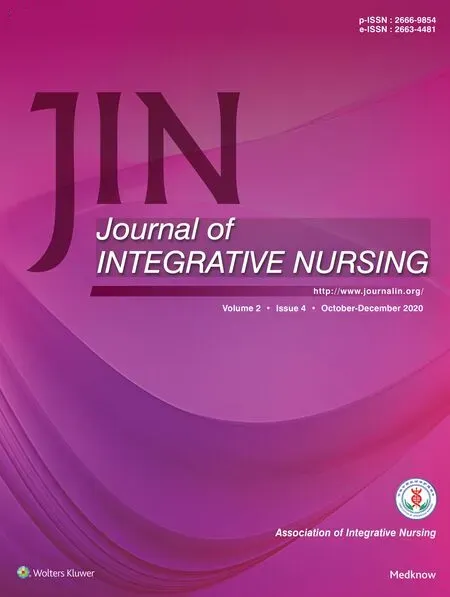Pelvic floor muscle exercises as adjunct therapy for urinary incontinence among female nurses in the era of COVID-19 pandemic
Chidiebere Emmanuel OKECHUKWU
Department of Public Health and Infectious Diseases, Sapienza University of Rome, Rome, Italy
Dear Editor,
Urinary incontinence (UI) is defined as involuntary leakage of urine.[1]Higa and Lopes.[2]found that nursing activities that require greater physical effort increase urinary loss among female nurses with UI, resulting in stress, humiliation, and lack of focus at work. Pelvic floor muscle exercises (PFME)should be used as a health promotion strategy for the prevention and management of UI among female nurses,especially in the time of COVID-19 pandemic as nurses are faced with numerous tasks and stress. The use of sanitary pad is the most frequent strategy used by female nurses to manage UI during working hours, and this approach is not usually convenient for them.[2]UI affects the quality of life and sexual health of female nurses.[3]The risk factors for UI among females are aging, childbearing, increase in body mass index, anxiety, depression, and musculoskeletal disorders.[4]
PFME, also known as Kegel exercises are vital in the management of UI in women because it helps in the restoration of perineal muscles, hence improving the timing of contractions, the strength and stiffness of the pelvic floor muscles.[5]The major role played by PFME in the treatment of UI is by strengthening the pelvic floor muscles through contracting the transverse abdominal muscle.[5]Pelvic floor muscle training encompasses the repetitive contraction of the pelvic floor muscles, hence improving strength, perineal support, and muscle tone, as the pelvic floor is entirely composed of striated muscle, the principle of strength training for striated muscle is adhered when attempting to tone and strengthen the pelvic floor, the movement is a voluntary inward and upward contraction, or perhaps squeezing of the pelvic floor.[5]PFME is usually performed by emptying the bladder, followed by tightening and relaxing the pelvic floor muscles at every given interval. This can be done while sitting, kneeling, standing with legs apart, and lying down; at least 8–12 contractions should be carried out on an average of 3 sets per day, at moderate-to-vigorous intensity.
A significant benefit of PFME for female nurses with UI is to retrain their urinary bladder. Contraction of the external urethral sphincter repeatedly relaxes the bladder; hence the contractions of the pelvic floor muscles will suppress bladder contraction so that the need to urinate eventually reduces.When a female nurse who is experiencing UI feels an urge to urinate while on duty, either sitting or standing, she can halt the sensation by contracting her pelvic floor muscles,and this will give her more time to walk to the restroom with urinary control. However, nurses with UI should be prevented from lifting heavy loads or carrying out the intense physical task to minimize the severity of UI during working hours.
In conclusion, PFME should be recommended to female nurses with or without UI to improve their quality of life,physical and sexual health; hence, they should be encouraged to perform these exercises routinely at home and in their working place for better health outcome and effective job performance in the era of COVID-19 pandemic.
Financial support and sponsorship
Nil.
Con flicts of interest
There are no conflicts of interest.
 Journal of Integrative Nursing2020年4期
Journal of Integrative Nursing2020年4期
- Journal of Integrative Nursing的其它文章
- Nursing administration in the geriatric department in the epidemic of COVID-19
- Effect of mild moxibustion in improving the quality of life of patients with diabetic peripheral neuropathy
- An innovative approach of using online problem-based learning and case-based learning in teaching disaster nursing during the COVID-19 pandemic
- The impact of sleep quality on reported anxiety and fatigue among shift nurses: The mediating role of resilience
- Anxiety and perception among nurses toward the outbreak of COVID-19 in University of Uyo Teaching Hospital, Akwa Ibom State
- Assessing the reasons for increase in self-medication and control measures among student nurses in University of Benin Teaching Hospital, Edo State, Nigeria
